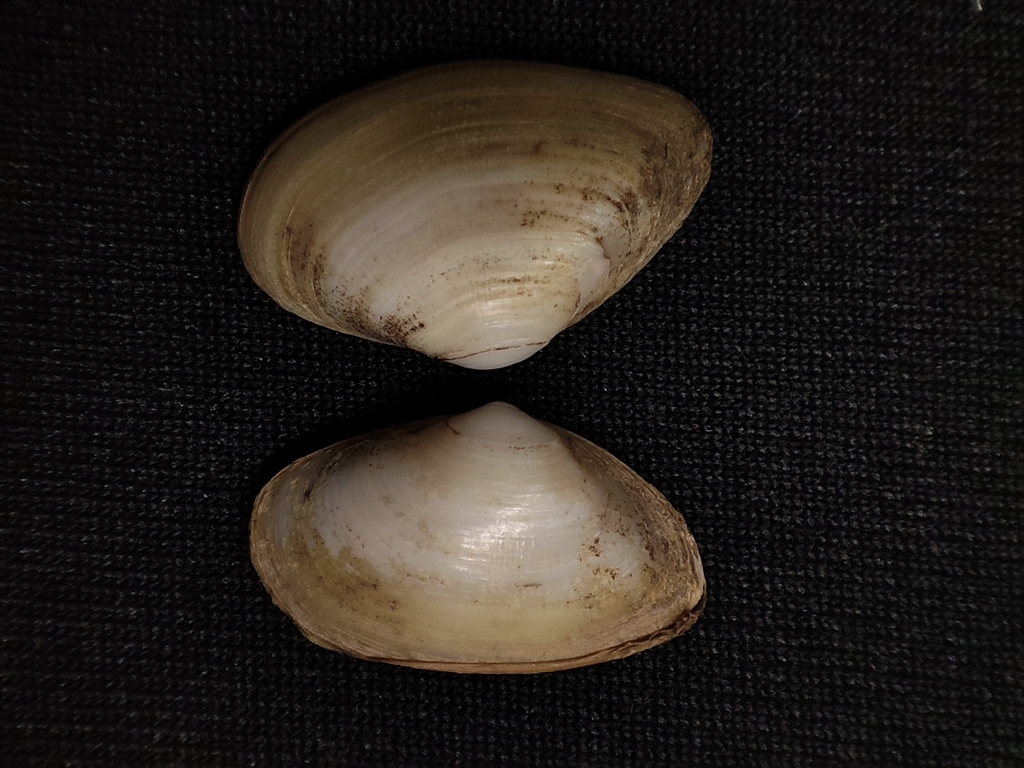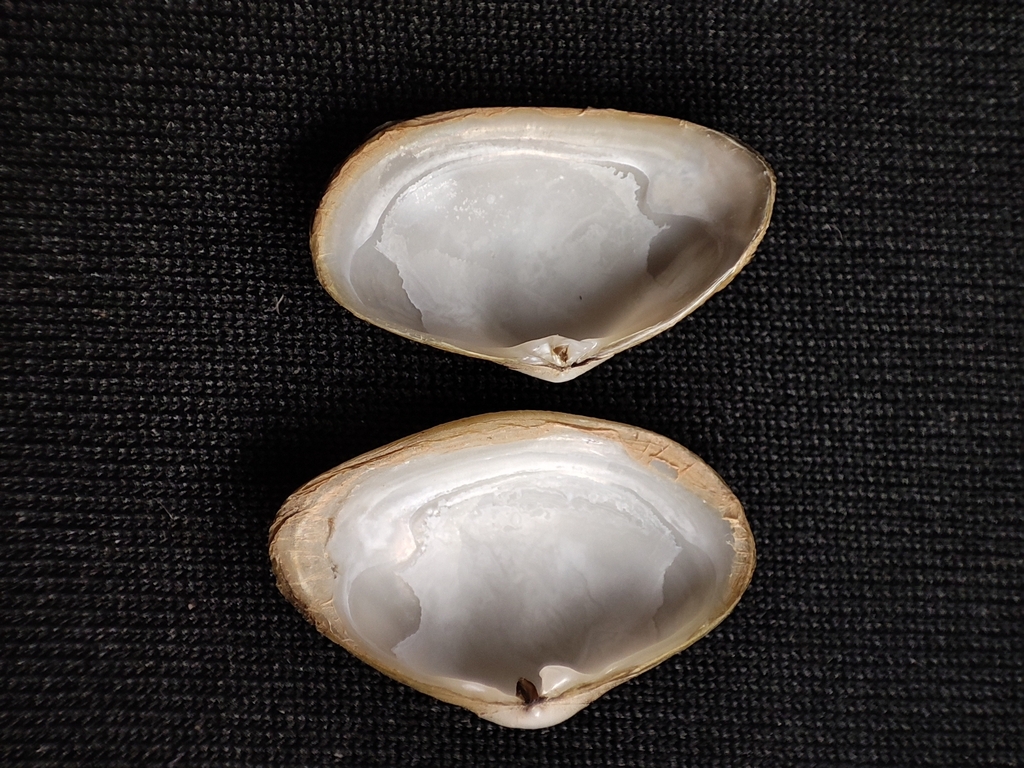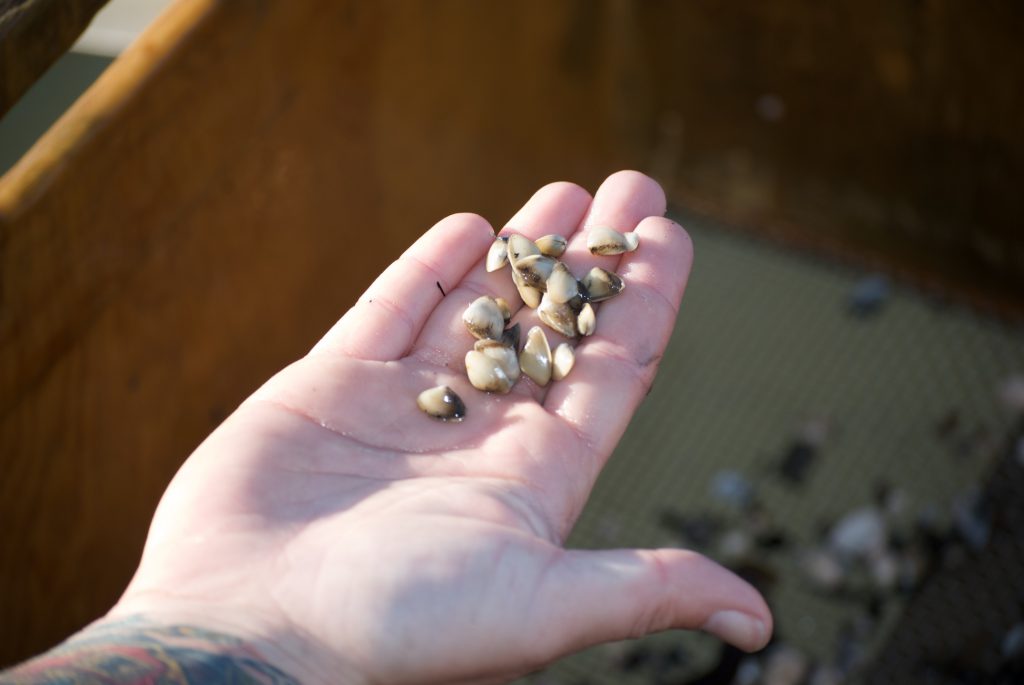Scientific names: Nuttallia obscurata and Potamocorbula/Corbula amurensis
Featured image credit: User: pintail, iNaturalist.org. Link to observation.
What Are They?
Nuttallia obscurata, commonly known as the purple varnish or mahogany clam, was first introduced to the United States and Washington from ship ballast water from Asia. It is freshwater tolerant and is most abundant in areas where there is freshwater runoff.
Potamocorbula/Corbula amurensis, commonly known as Asian or overbite clam is native to the area spanning from eastern Russia to southern China. It was first detected in San Francisco Bay, California in 1986. This clam is primarily subtidal but occasionally lives in intertidal mudflats.
Are They Here Yet?
The purple varnish clam has been in northern Puget Sound for about ten years. Colonies are in the San Juan Islands in densities of more than eight hundred per square meter.
The overbite clam has not been detected yet in Washington, but has been found nearby in the San Francisco Bay area.
Why Should I Care?
The purple varnish clam grows prolifically, forming dense colonies very rapidly and displacing native species. It can be harmful to humans because of its higher level of toxins.
The overbite clam also grows very quickly and can live in a variety of habitats. Its presence has been cited in the declines of recreational fishing stocks as well as native species.
How Can We Stop Them?
To prevent spread, clean, drain, and dry your equipment after each use.
What Are Their Characteristics?
- Purple varnish clams
- This clam is less than three inches in length and nearly oval shaped, with the back end slightly longer and more angular. The shell is relatively flat, with a large external hinge.
- The clam gets its name from the shiny brown coating on the outside of the shell.
- It has two long, thin, tubelike structures, called siphons, and a large foot that is translucent white and can be fully retracted. The clam uses its foot and siphons to burrow and live deep underground.
- The inside of the shell usually is a uniform shade of purple. Occasionally, small clams will have purple coloring on the outer surface.
- Asian/overbite clams
- This is a tan, white, or yellow clam, up to about one inch long. Its shell overall is shaped like a broad isosceles triangle.
- The overbite clam gets its name from the right half of the shell being larger than the left and slightly overhanging its lower margin.
- Younger clam shells are covered by a thin, smooth tissue, which becomes wrinkled around the lower margin in older clams.
Additional Photographs



